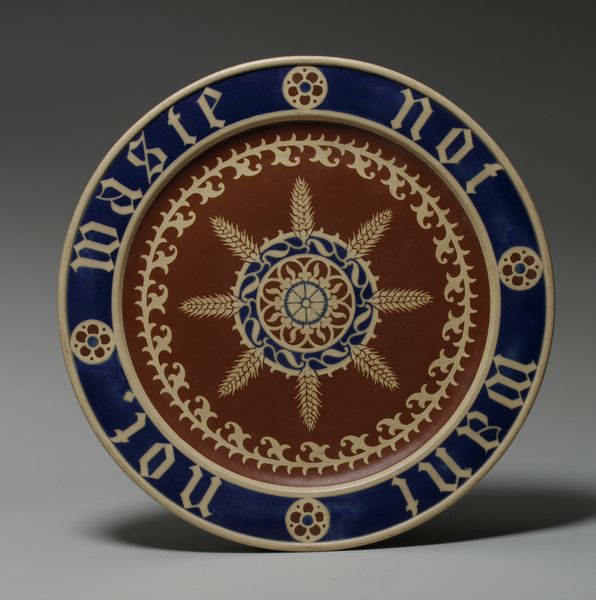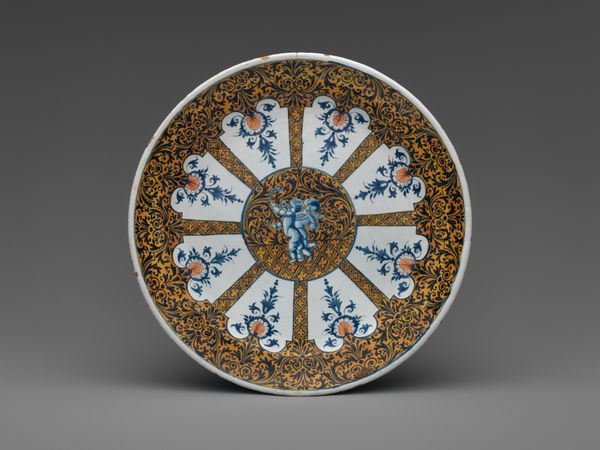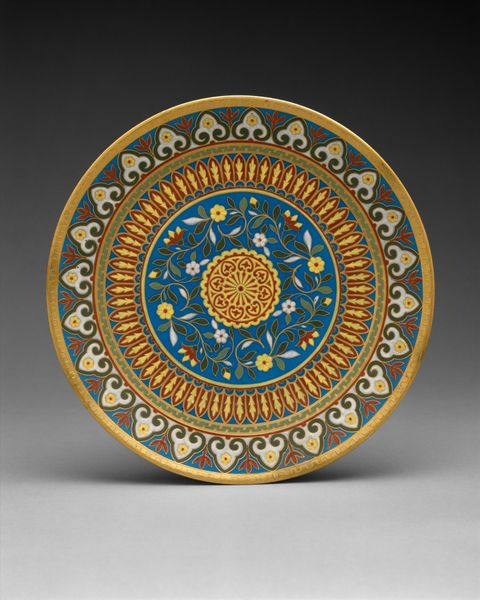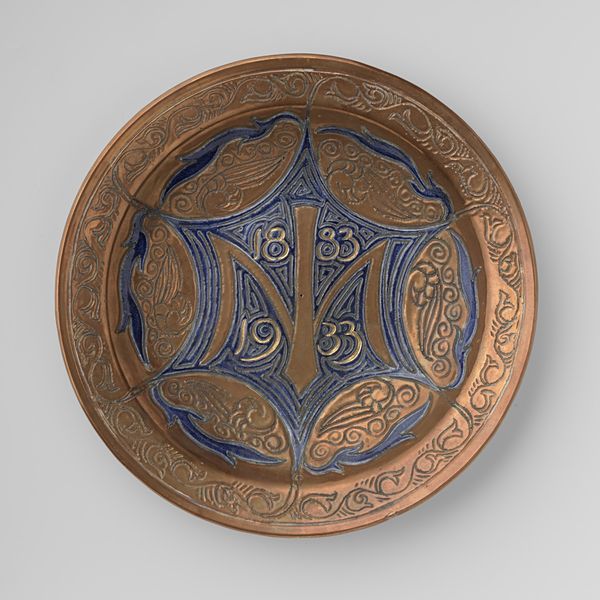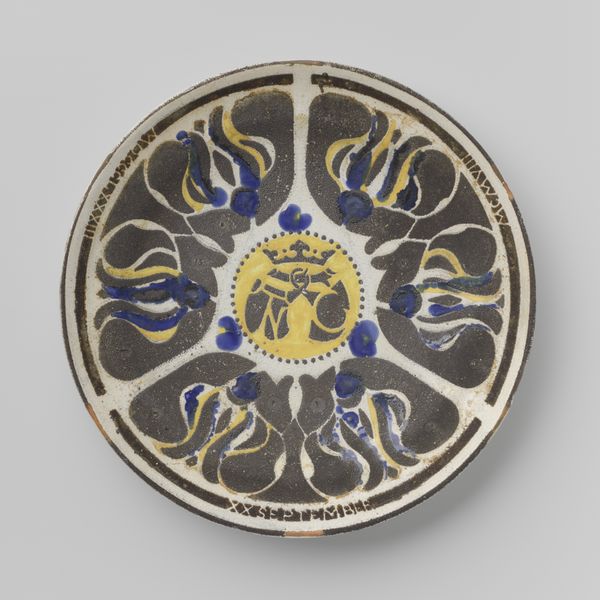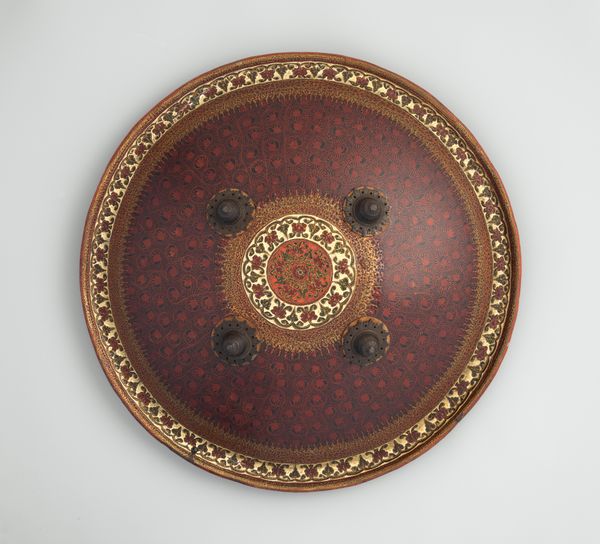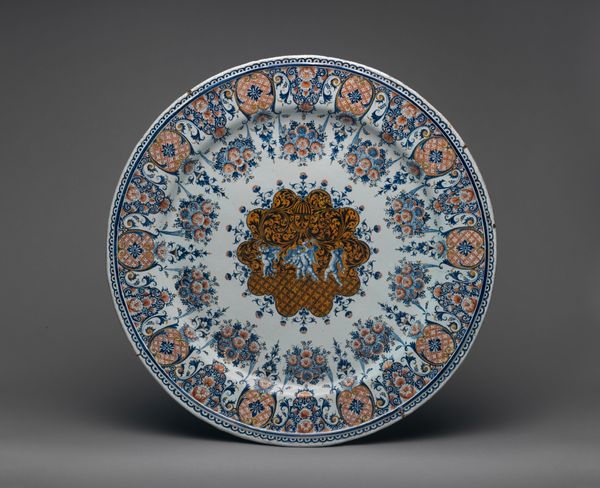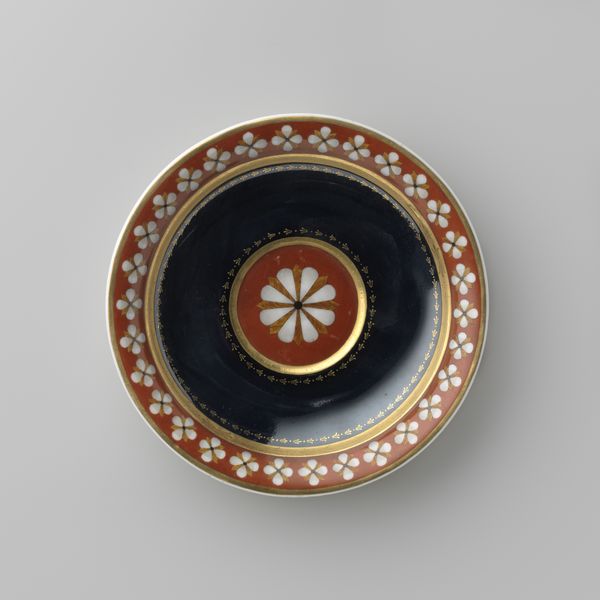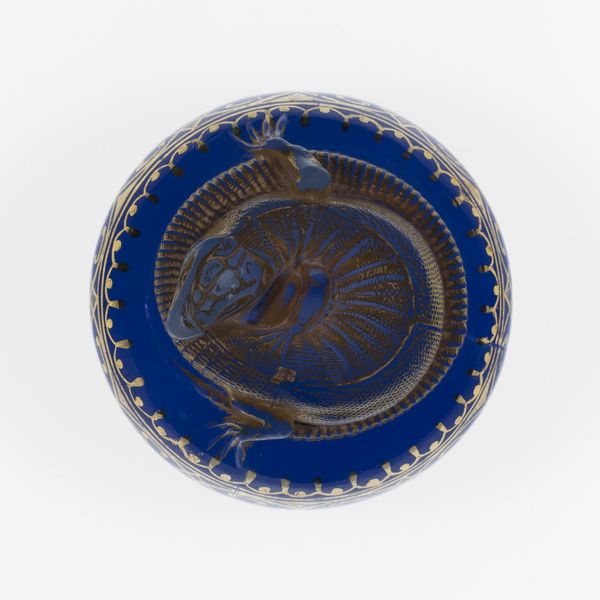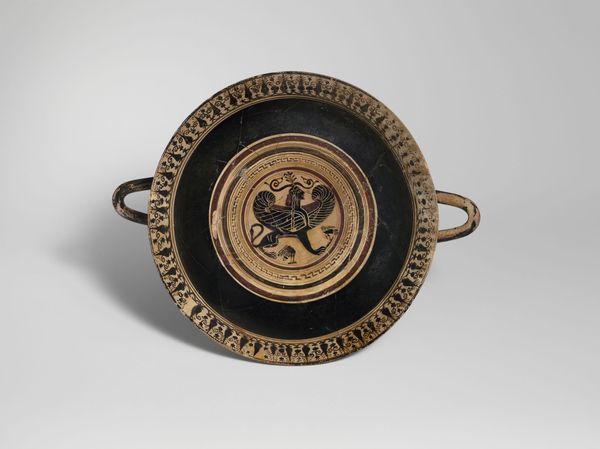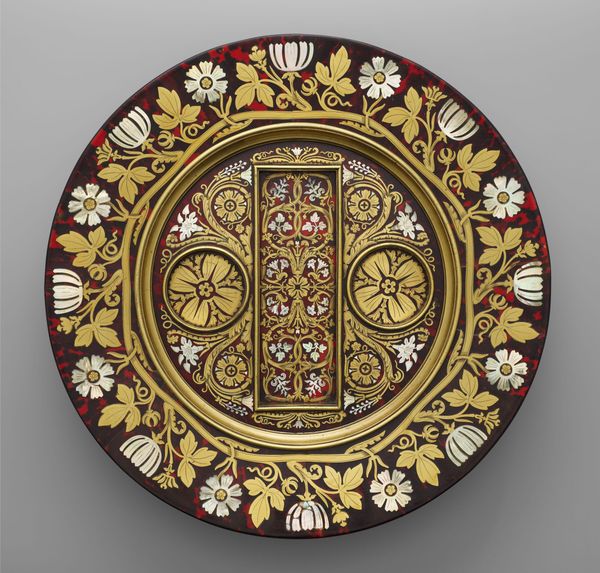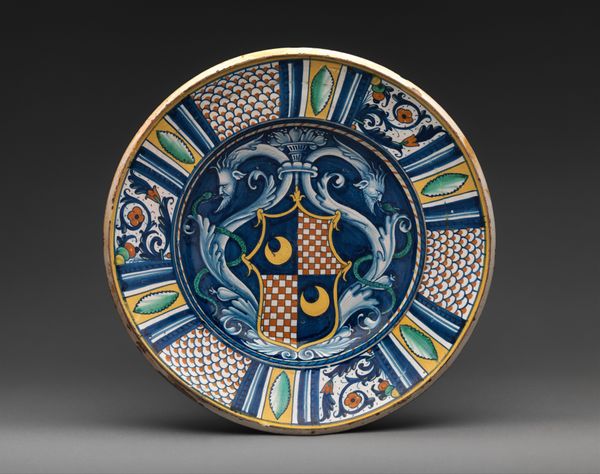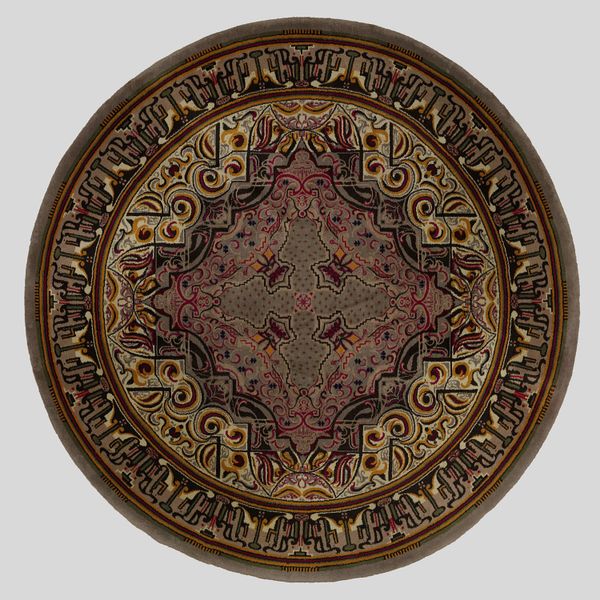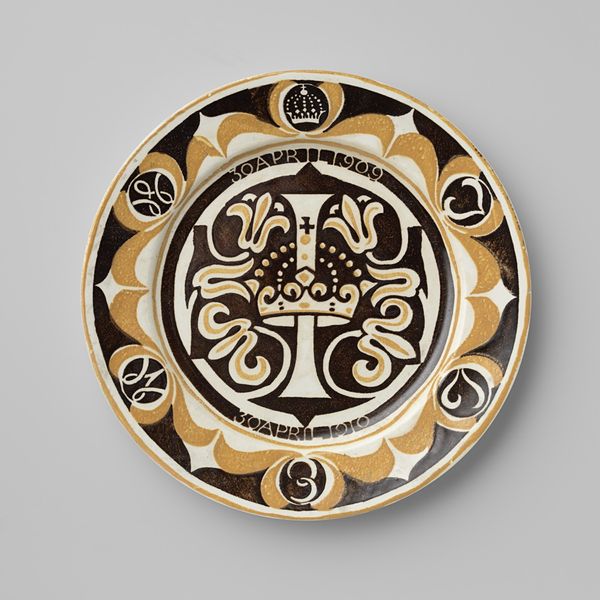
ceramic
#
ceramic
#
round design
#
england
#
decorative-art
Dimensions: Diam. 13 in. (33 cm)
Copyright: Public Domain
Curator: Here we have a ceramic bread plate crafted between 1847 and 1850 by Augustus Welby Northmore Pugin. Editor: My initial reaction is that there’s a visual balance at play that calms the eye. The circular composition centers around a brown field ornamented with what looks like radial symmetry; botanical and floral patterns rendered in a creamy tone that contrasts with a deep-blue, boldly-lettered rim. Curator: The symmetry, indeed, is striking, reinforcing Pugin's broader interest in neo-Gothic design and his principles of truthful construction. You see the wheat stalks—symbols of sustenance, central to the eucharistic context Pugin advocated for revival in religious and domestic life. Editor: Ah, Eucharistic, yes. The visual harmony certainly has an echo of a liturgical setting to it. This must reflect Pugin’s architectural theory, with ornamentation playing an explicit structural role, almost as a moral imperative? Curator: Precisely! For Pugin, design was never merely aesthetic; it was fundamentally linked to ethical and religious principles. The inscription around the rim, while partially obscured in the view, is rendered in a deliberately legible Gothic script, integrating text as part of the overall design structure. It certainly contributes to that sense of harmony that struck you immediately. Editor: I’m now focused on the typography itself – the blocky, unadorned lettering sits oddly with the overall delicacy of the ornamentation and symmetry. There’s a tension introduced – that relates to the scale and context in which Pugin was doing this work, that would eventually define ‘good’ Victorian design. It feels almost a rejection of the contemporary maximalism that otherwise swept Britain during his time. Curator: Absolutely. The tension between form and utility was something Pugin grappled with, he wanted the design to serve a function, but also elevate the spirit. This plate offers insight into Victorian society's burgeoning interest in design reform, linking it to social and moral improvement. Editor: Considering all, this bread plate encapsulates a potent ideological and aesthetic stance; it becomes far more than merely a decorative piece. It's fascinating how this synthesis communicates deeper concerns about art, society, and religious identity during Pugin’s lifetime. Curator: I agree; a relatively modest object that serves as a window into a world of complex ideas and debates that shaped 19th-century England.
Comments
No comments
Be the first to comment and join the conversation on the ultimate creative platform.
